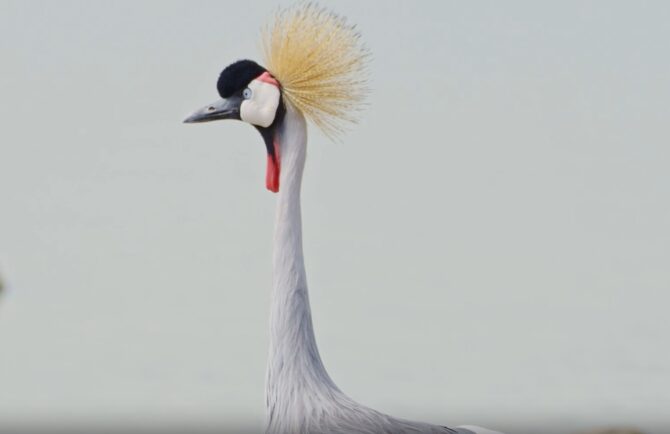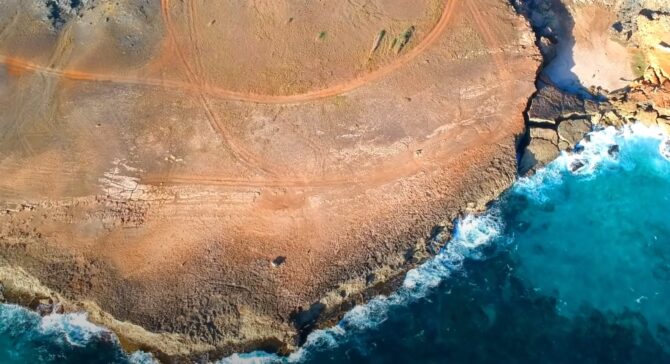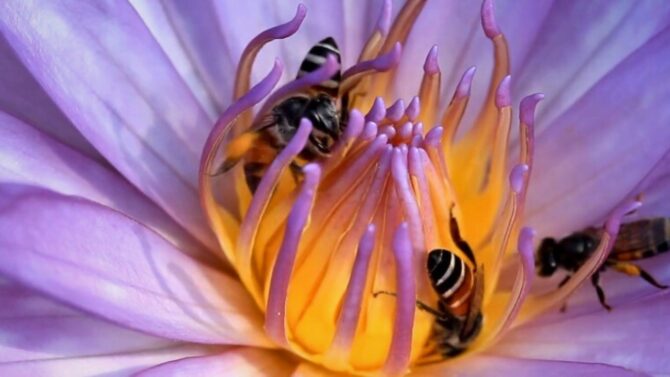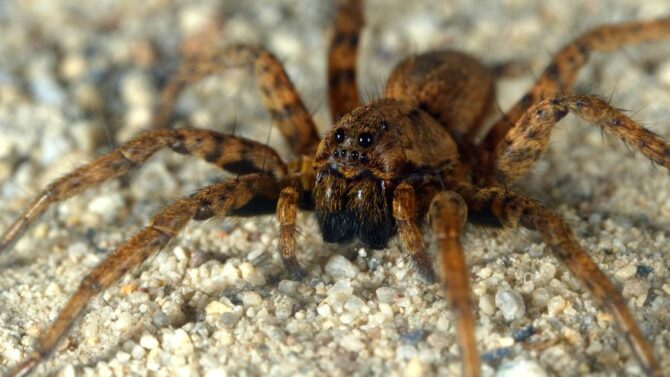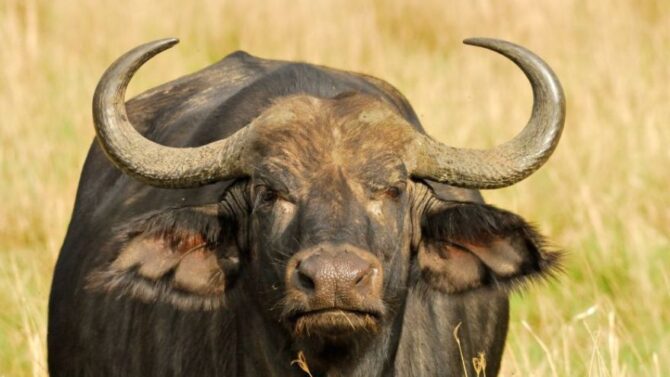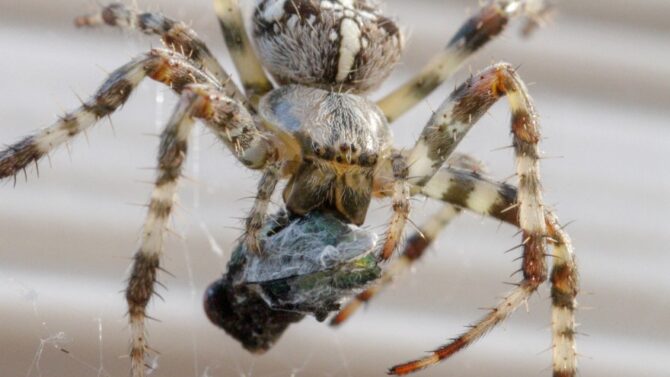Invertebrates: Facts, Characteristics, Types & Pictures
Invertebrates are a distinct group of animals that do not share a common ancestor (polyphyletic group) characterized by the absence of a vertebral column linked to the notochord.
This class encompasses all animals besides those classified in the Chordata Vertebrata sub-phylum.
The subphylum is regarded as a major classification in animal taxonomy as it houses most species in the animal kingdom.
The term invertebrate is coined from the Latin word vertebra, which refers to joints but is specific to the spinal column joints of a vertebrate.
The Latin word vertebra is itself sourced from the act of turning, which is reflected in its root word “vorto” or “verto,” which translates to turn.
The Latin prefix “in” is added to “vertebra” to show the absence of the vertebra as it translates to “without” or “not.”
Often the major hallmark of the animal class is limited to the absence of a vertebra, but the animal group poses much more wonders, which will be dissected in clear detail in this article.
Interesting Facts About Invertebrates
- The first invertebrates are estimated to have appeared millions of years ago. The first invertebrate is believed to have evolved about 600 million years ago in the Cambrian era.
- Invertebrates account for 97% of animal species in the world.
- A phylum of invertebrates, the Cycliophora, lives and thrives in the mouth part of lobsters.
- The largest solitary invertebrate is the giant squid (Architeuthis dux) which belongs to the Mollusca phylum. It measures about 20 feet long.
- The ocean quahog is the longest-lived invertebrate. The marine bivalve mollusk can live up to 400 years. An ocean quashing named Ming holds the record for the longest-lived invertebrate species. Ming holds the Guinness World record for the longest-lived animal in history. The ocean quahog, dredged off the coast of Iceland in 2006, was born in 1499 and died in 2006.
Characteristics of Invertebrates
While the shared characteristics unique to invertebrates mainly focus on the absence of a backbone, it is imperative to understand that these shared characteristics do not in any way reflect homologous biological traits (characteristics shared by animals in different taxonomic ranks by shared ancestry).
The classification of invertebrates is akin to the shared characteristics of insects with wings.
This fact is necessary for understanding this animal class, as characteristics common to the species are not universal.
With that established, we reviewed the shared characteristics of the animal class while highlighting a few exceptions.
Morphology and symmetry
A common aspect of multicellular organisms is the exhibition of symmetry in body plans.
This extends to the animal class, as all species in the animal class exhibit either radial, spherical, or bilateral body symmetry.
However, while symmetry is common to all, few species in the animal class do not exhibit these characteristics.
Groups in the animal class that exhibit asymmetry include the gastropod species, such as snails and slugs.
Though they externally appear symmetrical, as indicated by the helical shells of the snail, their bodies are not symmetrical.
Due to the fluctuations in the symmetry patterns of their bodies, the scientific community is at odds over the symmetry of the gastropod species.
Nervous System
Since the discovery of neuron cells in leeches, the first invertebrate in which the discovery was made, it has become known that species of the animal class possess neurons and a complex nervous system.
Though not similar to those of vertebrates, particularly mammals, the neurons in the species of the animal class works similarly.
The response of the neuron cell fires is similar to that of mammals when stimuli such as changes in pH, temperature, or tissue trauma occur.
The complexity and capabilities of the nervous system of the species of animal class is further elevated in certain species.
One instance that points to this discovery was the ability of the sea hare to engage in memory and learning activities using nociceptors.
In mollusks, the neurons were observed to possess the ability to detect an increase in pressure and tissue trauma.
The presence of neurons and a nervous system in species of the animal class have been observed in vast sub-groups such as the nematodes and arthropods groups.
Respiratory System
A key hallmark of the animal class is its open respiratory system.
The open respiratory system consists of spiracles, tracheoles, and tracheae.
While these organs form parts of the respiratory system of invertebrates, their distribution and design are unique in each species.
In insects, spiracles differ in distribution, but most insects possess a pair of spiracles on each side of the body.
The spirals in the respiratory system of this animal group species help transport metabolic gases to tissues in the body.
The tracheoles come equipped with little tubes that help penetrate cells and are the site for the diffusion of metabolic gases.
The tracheae are found on the cuticular exoskeleton as invaginations that extend to the entire body length but cover a diameter of about 0.8mm.
Reproduction
Reproduction in species exclusive to the taxonomic ranks is similar to that of vertebrates in that they engage in sexual reproduction.
Reproduction mainly involves the production of reproductive cells that undergo meiosis to produce either non-motile ova or motile spermatozoa.
These then fuse to form zygotes, leading to the development of new individuals of the species.
Though this form of reproduction is engaged by the majority of species in the taxonomic rank, exceptions exist.
These species that are exceptions to the sexual mode of reproduction engage in asexual reproduction.
In some instances, some species engage in both sexual reproduction as described above and asexual reproduction.
Social Interaction
Unlike most characteristics cited in this section, social interaction has little to do with the biological architecture species in the taxonomic rank but rather is behavioral.
These behavioral characteristics are shown by numerous species that fall in the taxonomic rank and, as such, make social interaction valid characteristics of the animal classification.
Social interaction is exhibited from cockroaches, spiders, Passalidae, termites, and Acari to bees.
This behavior is particularly seen in insects.
Types & Classification of Invertebrates
The classification of species in the invertebrates’ taxonomic rank is one that is subjected to debates in the scientific community.
However, eight groups have been established as the main groups in the invertebrates’ taxonomic rank.
Porifera
These species are known as sponges; as their scientific name translates, they are pore bearers.
The name sponges originated from the Greek term σπόγγος, which translates to sponges.
As their scientific name reveals, they possess pores over their bodies, and water passes through their spores as they thrive in aquatic habitats.
They are multicellular organisms but do not possess specialized cells.
They do have unspecialized cells which can be transformed into other cells.
One major hallmark of these species is the absence of circulatory, digestive, and nervous systems.
There are about 9,000 Porifera species known to man. They also can remold their bodies and cells and change from one type to another.
Ctenophora
This phylum is exclusive to marine invertebrates that are commonly known as comb jellies.
They can be found in all sea waters and are often small ranging from millimeters to about 1.5 meters.
As their moniker reveals, they possess a mass of jellies inside their bodies with about two thick cells outside the body.
Their combs are, in fact, groups of cilia with which they swim.
The subject of when these species first appeared and their position on the tree of life is subjected to dispute in the scientific community.
However, it is proposed that they are the second earliest branching animal lineage, next to the sponges.
Cnidaria
Exclusive to fresh and marine water, the Cnidaria are known for the nature of the body type they possess.
They have radially symmetrical, sessile polyps, swimming medusae, and mouths with tentacles.
The major hallmark of species of the animal class is the specialized cells with which they capture prey, known as the cnidocytes.
Various evidence points to the periods when these species first appeared.
However, scientists hold on to molecular clock analysis of their mitochondrial genes, which indicate that they first appeared about 200 million years before the Cambrian period or 741 million years ago.
There are about 11,000 species of the animal class.
Platyhelminthes
Known as the flatworms, Platyhelminthes are bilateral, unsegmented, and also have soft bodies.
Though they are bilateral, they possess no body cavity and no specialized respiratory and circulatory systems but pass oxygen through their bodies through the process of diffusion.
They also have one digestive opening for ingestion and egestion, which makes continual intake of food impossible.
The term flatworm alluded to the group is gotten from the Greek word πλατύ, platy meaning flat, and ἕλμινς, helminth- which means worm.
The phylum is subdivided into Trematoda, Monogenea, and Cestoda, which are all parasitic, and the non-parasitic Turbellaria group.
Annelid
Derived from the Latin word “anellus,” which translates to “little rings,” the species in the phylum are triploblastic (have three germ layers; ectoderm, mesoderm, and endoderm), bilaterally symmetrical, and ceomate.
They also make use of parapodia for locomotion and have segmented bodies where each segment contains various organs.
There are about 22,000 extant species in existence.
Though the fact that they are soft-bodied makes it hard for their fossils to be found, it is proposed that they first appeared about 518 million years ago.
They are often found in freshwater and moist habitats on land.
Nematoda
Coined from the Latin word Nematoda, this phylum houses all species of roundworms.
They are one of the most ubiquitous species on the planet as they exist in abundance in marine, freshwater, and terrestrial habitats.
In whatever habitat they exist, they outnumber other animal species in species and individual counts.
Nematodes form about 90% of animals that thrive on the ocean floor.
Their abundance and similarity in their details sometimes make it difficult to distinguish between the species. There are about 25,000 extant species of Nematodes.
Arthropods
The name Arthropods is derived from the Greek words Greek ἄρθρον (arthron), which translates joint and
πούς (pous), meaning foot. As the translation goes, species in this phylum have jointed limbs that are made of chitin. They are bilaterally symmetrical and have exoskeletons.
Arthropods account for about 80% of extant animal species.
One amazing feature of animals in this group is their ability to molt, shedding exoskeletons to produce new ones in order to continue growing.
They have open circulatory, nervous, respiratory, and excretory systems. Species also have compound eyes.
The earliest records of arthropods date back to the Cambrian period.
Mollusks
The etymology of this phylum can be traced back to philosopher Aristotle’s τὰ μαλάκια ta malákia, which means the soft ones.
The term is applicable to animals in this group as they possess soft bodies.
No other phylum in the marine habitat accounts for more species than mollusks, as they house about 23% of marine organisms.
The three major features used in identifying species that belong to the phylum include the nervous system structure, cavity for excreting and breathing, and the presence of a radula.
These features are universal to all mollusks, but other features vary across the entire species.
The phylum is subdivided into 8 other taxonomic ranks, with two being extinct.
Gastropods are the most common mollusks as they account for 80% of all mollusks.
Evidence from gastropods and other classes in the phylum suggests that they have existed since 541–485.4 million years ago and were present in the Cambrian period.
It is estimated that about 120,000 species of mollusks exist.
Frequently Asked Questions
What is the main characteristic of invertebrates?
The major characteristic of Invertebrates is the absence of backbones. This feature is universal to all invertebrate species. Other features such as morphological features, respiratory system, and others are not universal as exceptions to these shared traits are limited to the minority.
What is the importance of invertebrates?
Invertebrates are essential to the ecosystem’s functionality as they help pollinate crops, loosen soil, control pets, maintain habitats, and are food sources for other animals.
What kind of food do invertebrates eat?
The food fed by invertebrates varies for each species. But good is typically limited to wood, algae, tree leaves, detritus, other invertebrates, and small vertebrates such as fishes.
Where do most invertebrates live?
Invertebrates’ habitats can be found on land and water, either freshwater or marine water. Some live both land and water, such as dragonflies.
Why do most invertebrates live in water?
This results from their body structures and features that ensure they thrive and survive in water.
Are invertebrates multicellular or unicellular?
Invertebrates are animals, and as such, they are multicellular eukaryotic organisms. They consume food and digest and process it.
Wrap Up
Invertebrates remain vital to the full functionality of the ecosystem, as they contribute in significant detail to the ecosystem.
Wherever they exist, on sea and land, they serve an important purpose, and measures should always be taken to preserve their habitats and ensure their survival.
